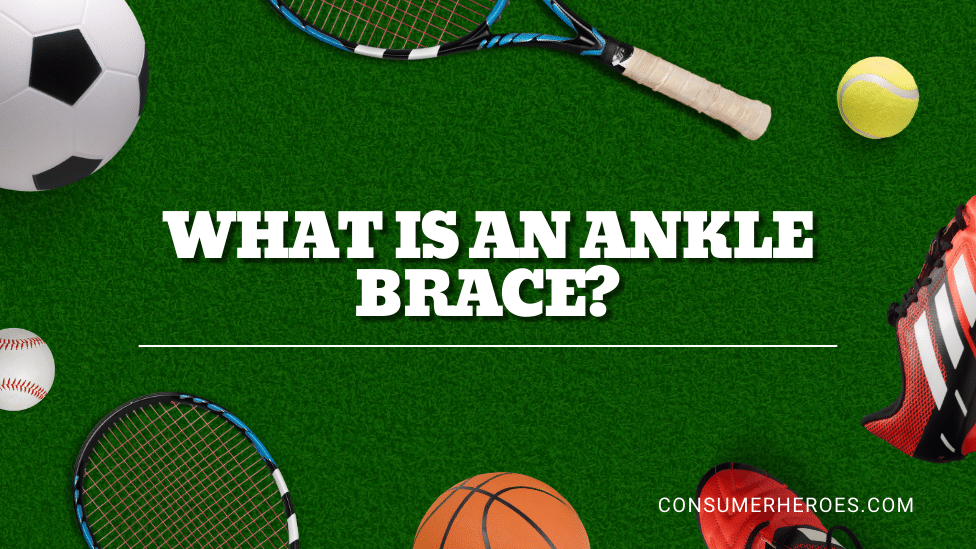A knee brace is a device designed to provide support and stability to the knee joint. It is commonly used to prevent or manage knee injuries, such as ligament sprains, meniscus tears, and patellar instability. Knee braces come in a variety of shapes and sizes, and are made from different materials, depending on the level of support required.
The main purpose of a knee brace is to provide external support to the knee joint, helping to reduce the risk of further injury or damage. A knee brace can also help to alleviate pain and discomfort caused by knee injuries, by providing compression and reducing swelling. In some cases, a knee brace may be used to help improve knee alignment and reduce the risk of developing osteoarthritis. However, it is important to note that knee braces are not a substitute for proper medical treatment, and should always be used under the guidance of a healthcare professional.
What is a Knee Brace?
A knee brace is a medical device designed to provide support and stability to the knee joint. It is typically made of a combination of materials, including plastic, metal, foam, and elastic straps. Knee braces are used to treat a variety of knee injuries and conditions, including arthritis, ligament sprains, meniscus tears, and patellar instability.
Knee braces come in a variety of types and styles, each with its own specific purpose. Some of the most common types of knee braces include:
- Prophylactic knee braces: These are designed to prevent knee injuries, particularly in sports where there is a high risk of knee injury, such as football, basketball, and skiing.
- Functional knee braces: These are used to provide support and stability to the knee joint after an injury, such as a ligament tear or meniscus tear.
- Rehabilitative knee braces: These are used after surgery or other medical procedures to help the knee joint heal and regain strength and flexibility.
Knee braces can be custom-made or off-the-shelf. Custom-made knee braces are typically more expensive but provide a better fit and more targeted support. Off-the-shelf knee braces are less expensive and more readily available but may not fit as well or provide as much support.
It is important to note that knee braces are not a substitute for proper medical treatment and rehabilitation. While they can provide support and help prevent further injury, they should always be used in conjunction with other treatments, such as physical therapy and medication.
Types of Knee Braces
Functional Braces
Functional braces are designed to provide support to the knee after an injury. They are typically made of a combination of metal, foam, and plastic. These braces are designed to limit the range of motion of the knee joint and provide stability to the knee. They are commonly used by athletes who have suffered an injury to the knee and are looking to return to sports.
Functional knee braces are available in different sizes and designs. They can be custom-made or off-the-shelf. Custom-made braces are designed to fit the individual’s knee perfectly, while off-the-shelf braces are available in standard sizes.
Rehabilitative Braces
Rehabilitative braces are designed to provide support to the knee after surgery or injury. They are typically made of foam and plastic and are designed to limit the range of motion of the knee joint. Rehabilitative braces are commonly used by individuals who have undergone knee surgery or have suffered a knee injury.
Rehabilitative knee braces are available in different sizes and designs. They can be custom-made or off-the-shelf. Custom-made braces are designed to fit the individual’s knee perfectly, while off-the-shelf braces are available in standard sizes.
Prophylactic Braces
Prophylactic braces are designed to prevent knee injuries. They are typically made of foam and plastic and are designed to provide support to the knee joint. Prophylactic braces are commonly used by athletes who are at a high risk of knee injuries.
Prophylactic knee braces are available in different sizes and designs. They can be custom-made or off-the-shelf. Custom-made braces are designed to fit the individual’s knee perfectly, while off-the-shelf braces are available in standard sizes.
Unloader Braces
Unloader braces are designed to provide relief to individuals suffering from knee osteoarthritis. They are typically made of foam and plastic and are designed to unload the pressure on the knee joint. Unloader braces are commonly used by individuals suffering from knee osteoarthritis.
Unloader knee braces are available in different sizes and designs. They can be custom-made or off-the-shelf. Custom-made braces are designed to fit the individual’s knee perfectly, while off-the-shelf braces are available in standard sizes.
Purpose of a Knee Brace
A knee brace is a medical device that is designed to provide support and stability to the knee joint. Knee braces are commonly used by athletes, people with knee injuries, and individuals with knee conditions such as osteoarthritis.
The primary purpose of a knee brace is to protect the knee joint from further injury or damage. Knee braces can help prevent excessive movement of the knee joint, which can cause additional damage to the ligaments, tendons, and cartilage. By limiting the range of motion of the knee joint, knee braces can help reduce pain and inflammation, and promote healing.
In addition to providing support and stability, knee braces can also help improve knee function. For example, knee braces can help improve proprioception, which is the body’s ability to sense the position of the knee joint in space. By improving proprioception, knee braces can help reduce the risk of falls and other accidents.
Knee braces can also help prevent or delay the need for surgery. For individuals with knee conditions such as osteoarthritis, knee braces can help reduce pain and improve knee function, which can help delay the need for knee replacement surgery.
Overall, the purpose of a knee brace is to provide support, stability, and protection to the knee joint, and to help improve knee function and delay the need for surgery.
Benefits of Using a Knee Brace
Knee braces are commonly used by athletes and individuals with knee injuries or conditions. Here are some of the benefits of using a knee brace:
1. Provides Support and Stability
Knee braces are designed to provide support and stability to the knee joint. They help to keep the knee in proper alignment, which can reduce stress on the joint and prevent further injury. This is especially important for individuals with knee injuries, such as ligament tears or sprains.
2. Reduces Pain and Swelling
Knee braces can help to reduce pain and swelling in the knee joint. They do this by providing compression, which helps to increase blood flow to the area and reduce inflammation. This can be especially helpful for individuals with conditions such as arthritis or bursitis.
3. Prevents Further Injury
Knee braces can also help to prevent further injury to the knee joint. They do this by providing protection and support to the knee, which can reduce the risk of reinjury. This is particularly important for athletes who participate in high-impact sports, such as football or basketball.
4. Improves Performance
Knee braces can also improve performance by providing support and stability to the knee joint. This can help athletes to perform better and reduce the risk of injury. Additionally, knee braces can help to improve proprioception, which is the ability to sense the position and movement of the knee joint. This can improve balance and coordination, which can also improve performance.
Overall, knee braces can be a helpful tool for individuals with knee injuries or conditions. They provide support and stability, reduce pain and swelling, prevent further injury, and improve performance. However, it is important to consult with a healthcare professional before using a knee brace to ensure that it is appropriate for your specific condition.
Potential Risks and Side Effects
While knee braces can be beneficial for many people, there are also potential risks and side effects to consider.
Skin Irritation
Wearing a knee brace for an extended period of time can cause skin irritation. This is especially true if the brace is too tight or if the skin is not kept clean and dry. It is important to regularly clean the skin underneath the brace and to take breaks from wearing it to allow the skin to breathe.
Reduced Range of Motion
Some knee braces are designed to limit the range of motion of the knee joint, which can be beneficial for certain injuries. However, wearing a brace that restricts movement for an extended period of time can lead to muscle weakness and stiffness. It is important to work with a healthcare professional to determine the appropriate amount of time to wear a brace and to perform exercises to maintain strength and flexibility.
Blood Clots
In rare cases, wearing a knee brace can increase the risk of blood clots. This is more common in individuals who have a history of blood clots or who are at a higher risk for them. It is important to discuss any concerns about blood clots with a healthcare professional before using a knee brace.
Discomfort
Wearing a knee brace can be uncomfortable, especially if it is not properly fitted or if it is worn for an extended period of time. It is important to work with a healthcare professional to ensure that the brace is the correct size and to make adjustments as needed to improve comfort.
Overall, while knee braces can be beneficial for many people, it is important to be aware of the potential risks and side effects. It is important to work with a healthcare professional to determine if a knee brace is appropriate and to ensure that it is used safely and effectively.
How to Choose the Right Knee Brace
When it comes to choosing the right knee brace, there are several factors to consider. Here are some tips to help you make an informed decision.
Consult a Healthcare Professional
Before purchasing a knee brace, it is important to consult with a healthcare professional. They can help you determine the type of knee brace that is best suited for your needs. For example, if you have a ligament injury, you may require a different type of knee brace than if you have arthritis.
Consider Your Activity Level
Your activity level is another important factor to consider when choosing a knee brace. If you are an athlete, you may require a knee brace that is designed for high-impact activities. On the other hand, if you are looking for a knee brace for everyday use, you may want to consider a more lightweight and comfortable option.
Know Your Size
When it comes to knee braces, size matters. A properly fitting knee brace can provide the support you need while also being comfortable to wear. Be sure to measure your knee carefully and consult the sizing chart provided by the manufacturer before making a purchase.
In summary, choosing the right knee brace requires careful consideration of your specific needs and circumstances. Consulting with a healthcare professional, considering your activity level, and knowing your size are all important factors to keep in mind.
Proper Use and Care of Knee Braces
Knee braces are designed to provide support and protection to the knee joint. However, it is important to use them correctly and take proper care of them to ensure they function effectively. Here are some guidelines for the proper use and care of knee braces:
1. Choose the Right Size
It is important to choose the right size knee brace to ensure maximum support and comfort. Knee braces come in different sizes, so it is essential to measure the knee and refer to the manufacturer’s size chart to find the appropriate size.
2. Wear the Brace Correctly
Knee braces are designed to be worn in a specific way. It is essential to follow the manufacturer’s instructions on how to put on and take off the brace. Make sure the brace is snug but not too tight, and adjust it as necessary to ensure it is in the correct position.
3. Use the Brace as Directed
Knee braces are designed for specific activities, such as running, jumping, or lifting. It is essential to use the brace as directed by the manufacturer and not for activities it is not intended for. Using the brace for the wrong activity can cause discomfort and may not provide the necessary support.
4. Clean the Brace Regularly
Knee braces can become dirty and smelly after repeated use. It is essential to clean the brace regularly to prevent bacteria buildup. Follow the manufacturer’s instructions on how to clean the brace, and avoid using harsh chemicals that can damage the brace.
5. Replace the Brace When Necessary
Knee braces can wear out over time and lose their effectiveness. It is essential to replace the brace when it shows signs of wear and tear, such as fraying or stretching. Using a worn-out brace can cause discomfort and may not provide the necessary support.
By following these guidelines, users can ensure their knee braces function effectively and provide the necessary support and protection to the knee joint.
Conclusion
In conclusion, knee braces are devices that are designed to provide support and stability to the knee joint. They are commonly used by athletes and individuals who have suffered knee injuries or have chronic knee conditions. Knee braces come in different types, sizes, and designs, and are made from various materials such as neoprene, elastic, and metal.
The effectiveness of knee braces in preventing knee injuries or reducing knee pain and discomfort is still a topic of debate among medical professionals. While some studies have shown that knee braces can help to reduce the risk of knee injuries, others have found no significant difference between individuals who wear knee braces and those who do not.
It is important to note that knee braces should not be considered a substitute for proper medical treatment and rehabilitation. Individuals who have knee injuries or chronic knee conditions should seek medical advice from a qualified healthcare professional before using a knee brace.
Overall, knee braces can be a useful tool for individuals who need additional support and stability for their knee joint. However, it is important to choose the right type of knee brace and to use it properly in order to achieve the desired results.







